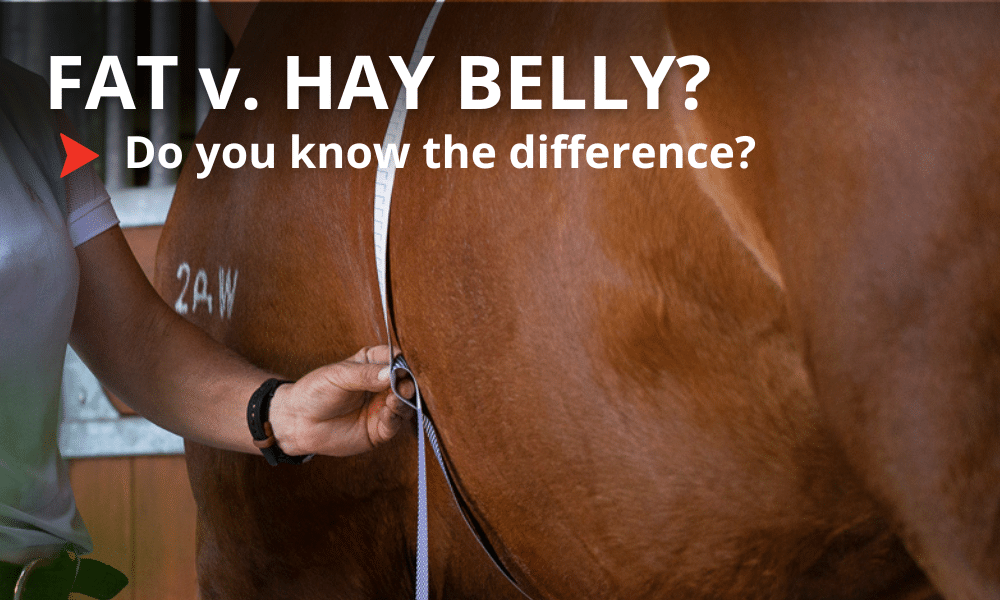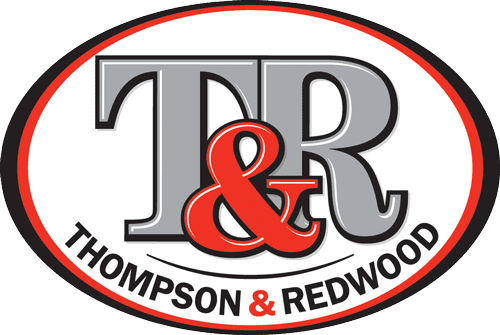
05 Jun Fat Horse or Hay Belly? And what causes it?
Fat horse or hay belly? Do you know the difference and what causes it?
When a horse has a large belly, many people confuse it with being overweight. But when we are assessing condition, we don’t use the belly as an accurate measure of how much weight a horse is carrying. In horses, we focus on 6 main areas to visually assess condition or weight:
- Loin/Croup
- Over the Ribs
- Around the Tailhead
- Withers
- Neck – especially the cresty neck score
- Behind the Shoulder
Assessing these areas enables us to give a Body Condition Score using the Henneke chart from 1 (emaciated) to 9 (extremely obese) based on them having fat deposits in the above areas. You can read more about how to Body Condition Score here.
But when a horse or pony shows a very large belly or ‘pot belly’ we call it a HAY BELLY. And it is not a sign of excess fat.
Hay or Pot Belly in horses and ponies is usually due to two main factors:
- Lack of topline and muscle
- A diet high in poor quality forage
1. Lack of Topline and muscle
When a horse lacks muscle and topline, it doesn’t have the strength to support its lower belly and the belly begins to drop below the normal underline. The ‘topline’ of a horse is made up mostly of muscle and describes the muscling that occurs across the horse’s wither, back, loin and croup. A healthy topline has a lot to do with how a horse carries itself, it’s athletic ability and strength.
When a horse lacks adequate muscle strength across it’s back, the belly starts to drop. It’s why you often see a bigger belly in young horses or older horses that aren’t in work, while it’s rarer in fit performance horses.
Poor topline can occur for a number of reasons including:
- Age
- Workload
- Lack of exercise or incorrect exercise
- Saddle fit
- Poor diet
- Lack of protein
Muscle itself is over 70% protein, so in order to maintain and build muscle, horses and ponies need to be consuming quality proteins through their diet. This is a whole topic on its own! But it does tie into the next cause of hay belly, which is low quality forage. Because when they have a diet high in poor quality forage (which is low in protein) there isn’t enough crude protein in their diet to contribute to muscle building.
But more on this below…
2. A diet high in poor quality forage
Forage and fibre are vital components of a horse’s diet, but not all forage is created equal! Low quality forages like straw, older pastures and poor-quality hays are high in insoluble fibre or lignin, and low in protein.
What is lignin? It’s the indigestible component of the plant wall, and even the fibre-loving bacteria in your horse’s gut cannot ferment it. The amount of lignin increases in plants as they age, and it is more present in the stem than in the leaf.
When horses consume a lot of insoluble fibre, it takes their bodies much longer to digest so they need to hold it for longer in the hindgut. This causes a few issues! It increases the ‘gut fill’ of the horse, which is how much feed they have sitting in their hindgut. It also leads to excessive gas production as the microbes try to do their job (gas is a by-product of fermentation).
And all this extra insoluble fibre requires more water to help the digestion process.
So, when paired with a decrease in topline and muscle definition, it becomes harder for the horse or pony to support their gut, and we start to see the classic signs of low hanging abdominal distension – or hay belly.
As mentioned above, poor quality hay often lacks enough digestible energy and protein too, which contributes to poor topline and body condition scores – a vicious cycle!
What constitutes poor quality forage?
Hay, straw and pasture can all be classed as poor quality. For hay to be good quality, it needs to be cut from a good paddock, then baled well. When we talk about forage quality, we look at their analysis results when tested, in particular:
- Crude protein (as fed)
- NDF % (Neutral Detergent Fibres) – the levels of cellulose, lignin and hemicellulose
- ADF % (Acid Detergent Fibres) – the levels of cellulose and lignin only
- Lignin levels (sometimes shown as a separate value on detailed forage analysis reports)
NDF% is the best indicator of the total fibre content of the hay as it shows all the cell wall carbohydrates. The ADF% is a useful indicator for the general digestibility of the hay.
Did you know for every 1% increase in lignin, the digestibility of the forage decreases by 3-4%!
When hay is tested and analysed, it is considered to be low quality where the NDF% is over 69%, the ADF% is over 45% and the Crude Protein is under 6%.
Excellent Quality Forage: 40-50% NDF | 30-35% ADF
Average Quality Forage: 55-65% NDF | 35-40% ADF
Poor Quality Forage: >69%NDF | >45% ADF
High-quality hay is essential for most horses and ponies, but especially for those with energy-demanding jobs like growing, pregnancy, lactation, high workloads, old age (reduced digestive function) weight maintenance and weight gain.
Here in Western Australia, we do see hay that with NDF% and ADF% levels higher than we would like.
Poor-quality forages like these do have a place in equine diets, they just need to be managed.
Low Quality Hay can still be beneficial...
Lower quality hay can be beneficial for horses and ponies that have certain dietary requirements, like needing to lose weight, or needing a low energy diet.
They still provide good levels of fibre to support gastrointestinal system and keep the hindgut full and functioning.
For example, an overweight pony that is not in work will have a lower energy and crude protein requirement. So they may get the 1.5% of their body weight in fibre fill from a poor-quality hay. A pony like this will still need to have a balanced diet that ensures they meet their protein, vitamin and mineral requirements to keep them functioning and maintaining healthy muscle tone.
How can you help a hay belly?
Fixing a hay belly requires a combination of diet management and exercise. Poor topline can lead to other issues with soundness and performance, so improving it helps many aspects of a horse’s life.
Exercise: A key to improving topline is encouraging a horse to move forward while engaging the hind end and core, lifting the belly and working ‘over the back’. For horses and ponies with poor fitness, start with slow walking and work them up to exercises like hills, pole work and transitions.
Forage Type: Make sure their forage type is suited to their individual needs. Look at your hay quality and try to get hay that has been analysed. This is especially important for horses and ponies with laminitis or metabolic conditions that need low sugar hay.
Diet and Balance: make sure their diet is balanced and they are getting the energy, protein, vitamins and minerals needed for their age, needs and workload.
Gut Health: horse’s need a healthy gut microbiome in order to utilise the fibre in their diets. Excessive insoluble fibre may upset the gut microbiome. Make sure you are feeding for gut health. Introduce new feeds slowly to give the gut microbes time to adjust and include prebiotic ingredients (like our Lupin Fibre Cubes) to feed and boost the good bacteria. Adding pre, pro and postbiotics may also help the microbiome.
REFERENCES:
- FEED YOUR STEED EQUINE NUTRITIONIST
- PEARSON, W. ET AL., (2018) EXPLORING RELATIONSHIPS BETWEEN BODY CONDITION SCORE, BODY FAT, ACTIVITY LEVEL AND INFLAMMATORY BIOMARKERS. JANIM PHYSIOL ANIM NUTR.



No Comments